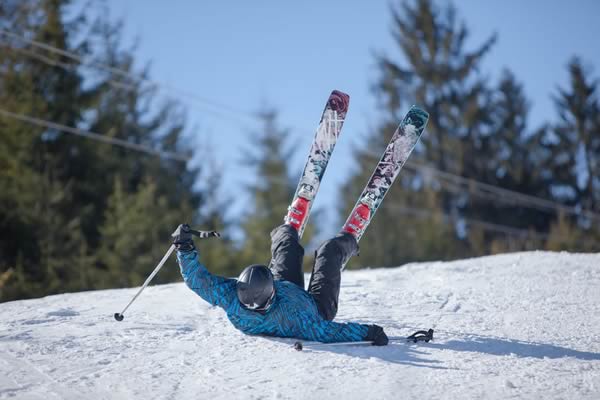 Written by Dr. David Geier, American Orthopaedic Society for Sports Medicine
Written by Dr. David Geier, American Orthopaedic Society for Sports Medicine
With the growth of the X Games, winter “extreme” sports like freestyle skiing and snowboarding are as popular as ever. These sports send athletes far into the air and down the slopes and ramps at tremendous speeds. Injuries, especially concussions and other traumatic brain injuries (TBI), unfortunately, can occur.
January is National Winter Sports TBI Awareness Month. Knowing just how common these injuries are in winter sports can help us take steps to prevent some of these brain injuries.
Extreme sports injuries to the head and neck
A study by Vinay K Sharma and colleagues recently published in the Orthopaedic Journal of Sports Medicine looked at the incidence of head and neck injuries in seven extreme sports – snowboarding, snow skiing, snowmobiling, surfing, skateboarding, mountain biking and motocross. The study is helpful to provide injury data, as these sports often lack the ability for organizing bodies to track participants. Plus this study allows us to compare rates of concussions in winter sports like skiing and snowboarding to the risks in warm-weather activities.
The study’s findings are summarized below:
- More than 4 million injuries were reported in the seven sports between 2000 and 2011. Eleven percent involved injuries to the head and neck with 83% of these involving the head.
- Head and neck injuries increased significantly over the period studied with 34,565 occurring in 2000, while 40,042 occurred in 2011.
- Skateboarding, snowboarding, skiing and motocross had the highest number of head and neck injuries. Mountain biking, snowmobiling, and surfing had the lowest numbers.
- Snowboarding had the most concussions. In fact, about 30% of concussions in extreme sports occurred in snowboarding. Snow skiing was associated with about 25% of concussions.
- Skateboarding and motocross had the most severe head and neck injuries, like skull fractures and cervical spine fractures.
Tips to prevent head injuries in winter sports
While the data might seem frightening, there are some steps that might decrease your chance of suffering traumatic brain injuries in winter sports:
- Wear a helmet. Helmets are critical in extreme winter sports like skiing and snowboarding, which account for a significant number of concussions.
- Do everything possible to optimize the conditions where you are performing these activities. Stay within the marked boundaries on the slopes and watch out for obstacles and hazardous conditions
- Try to participate in these activities in places where medical care is not far away. Professional competitions have doctors and emergency medical services, but many people perform these activities in remote locations. Seek medical attention if there is any question that you might have suffered a traumatic brain injury, no matter how minor it might seem.
Courtesy Office of Health.gov, Disease Prevention and Health Promotion, U.S. Department of Health and Human Services.